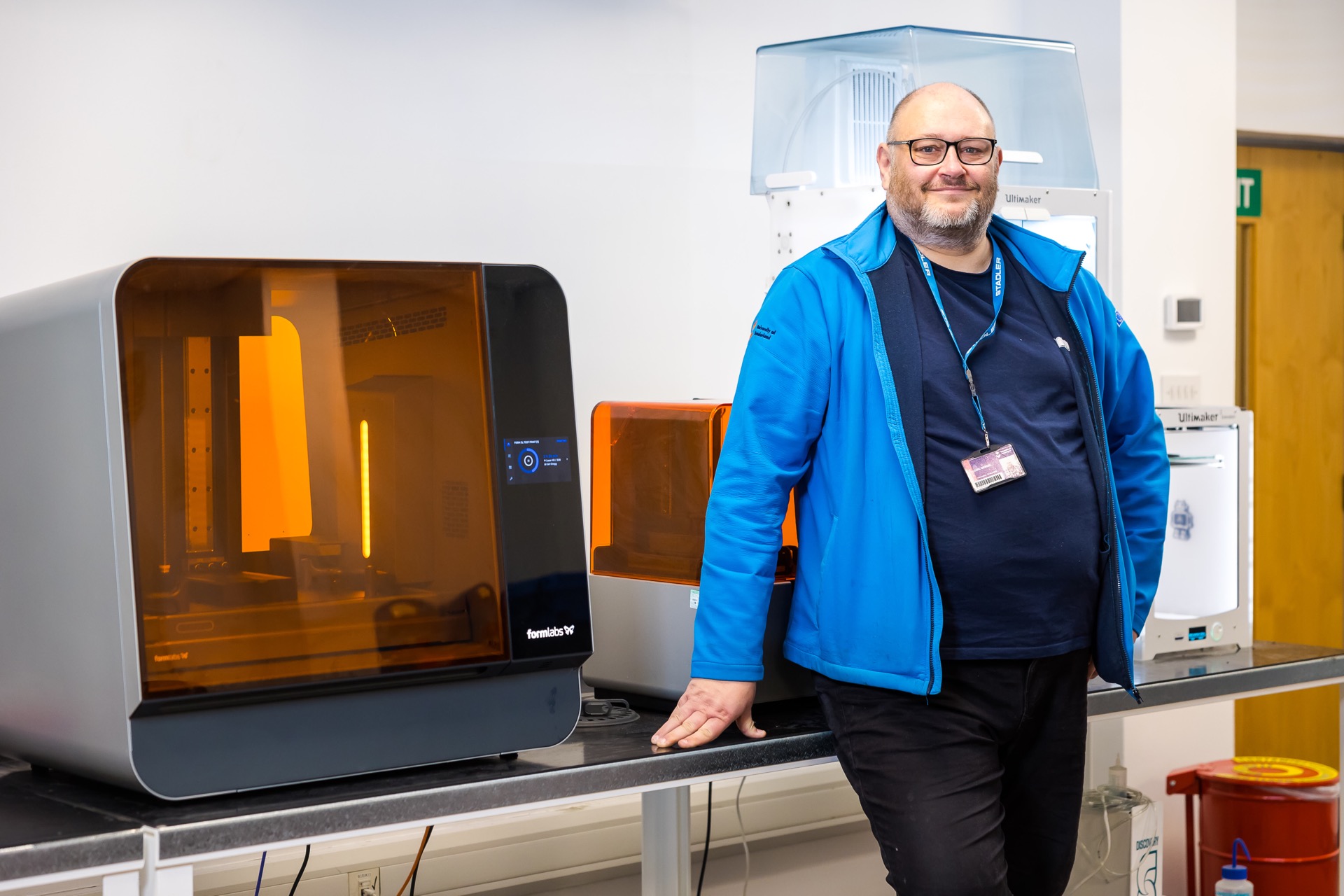Carl Gregg, product and process design specialist, has helped open the eyes of hundreds of SME manufacturers to the potential of additive manufacturing.
In its earliest form, Additive Manufacturing (AM) – or 3D printing as it is often referred to – has been with us since the early 80s and it should be no surprise that the technology has evolved significantly since then.
We are now at a stage where functional parts can be produced that can potentially outperform those which are conventionally manufactured. Prototyping remains a major use for additive manufacturing, however the days that 3D printing’s sole use was to produce non-functional prototype parts is over and increasingly, there is a trend emerging within the industry where additive manufacturing is being used for far more impactful means.
Our Prototype and Innovation Factory is home to a range of 3D printers that range from very basic (but still very useful) to advanced industrial machines. We even have a large format 3D printer that has a print area of 1mx1mx0.7m that can rapidly produce large parts that would usually need to be split apart to print on numerous printers.
In terms of advanced materials, we also boast two printers from market-leading 3D Printer manufacturer MarkForged (Metal X and Mark Two). The Metal X is able to print metal parts in a range of materials such as stainless steel, tools steels, Inconel and copper. This same printer was recently utilised for a project to produce an alternative to a cast part that was needed for testing. The lead time to produce the initial casting was six weeks compared to the production time on the Metal X which was just a few days.
We have had similar successes with the Mark Two system, which allows us to produce composite reinforced parts. The printer is fantastic for producing components that require highly functional parts such as machining fixtures or end of arm tools. The printer achieves this in two ways. Firstly, the material that is used to produce the parts is a blend of nylon and chopped carbon fibre, however the feature that sets this printer apart is its ability to inlay continuous fibre reinforcement such as carbon fibre or Kevlar. This fibre reinforcement allows us to produce plastic parts that have a similar functional strength to 6061 aluminium.
For higher volumes of production, we have an HP Multi Jet machine that can produce accurate, highly detailed parts in batches in an overnight run. Increasingly, companies are seeing this as a viable alternative to injection moulding for shorter runs of under 10k. The printed parts from the HP machine are air and watertight and some interesting case uses have been found to exploit this, such as, incorporating vacuum lines into end of arm tooling to produce a part that cuts out numerous assembly steps.
A common trait that we do see is that the 3D printing can increase the band width of conventional machines. For example, the printers need very little oversight when compared to CNC machining and they’re very easy and quick set up. Typically, a machine could be set up with a “digital warehouse” of jigs, fixtures, end of arm tooling, etc. and they can be called off with only a button press. This can reduce lead time and cost for any production change over and to ensure your machines keep running.

